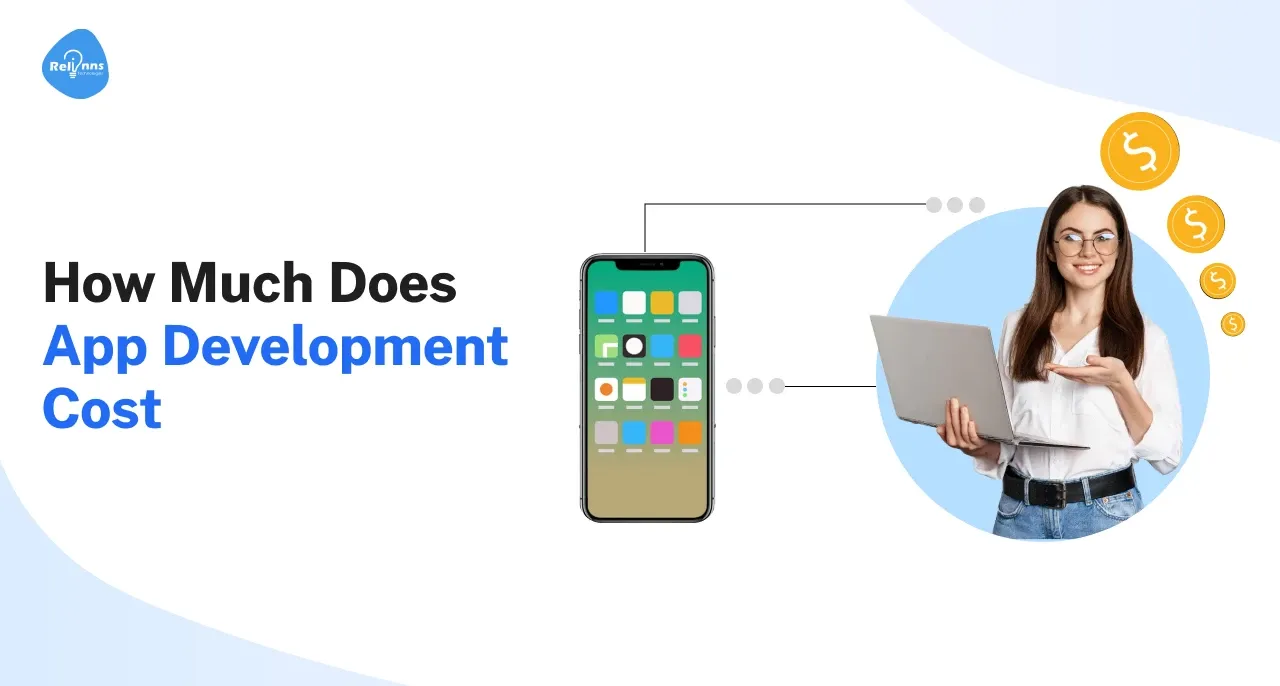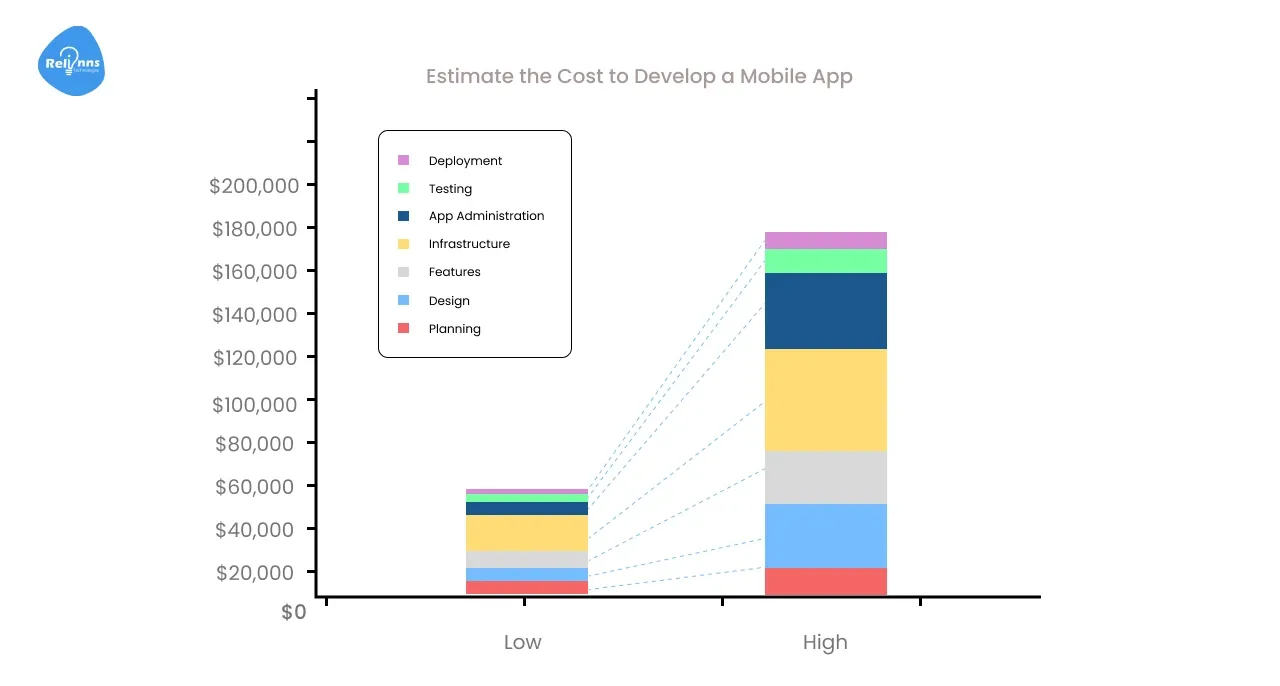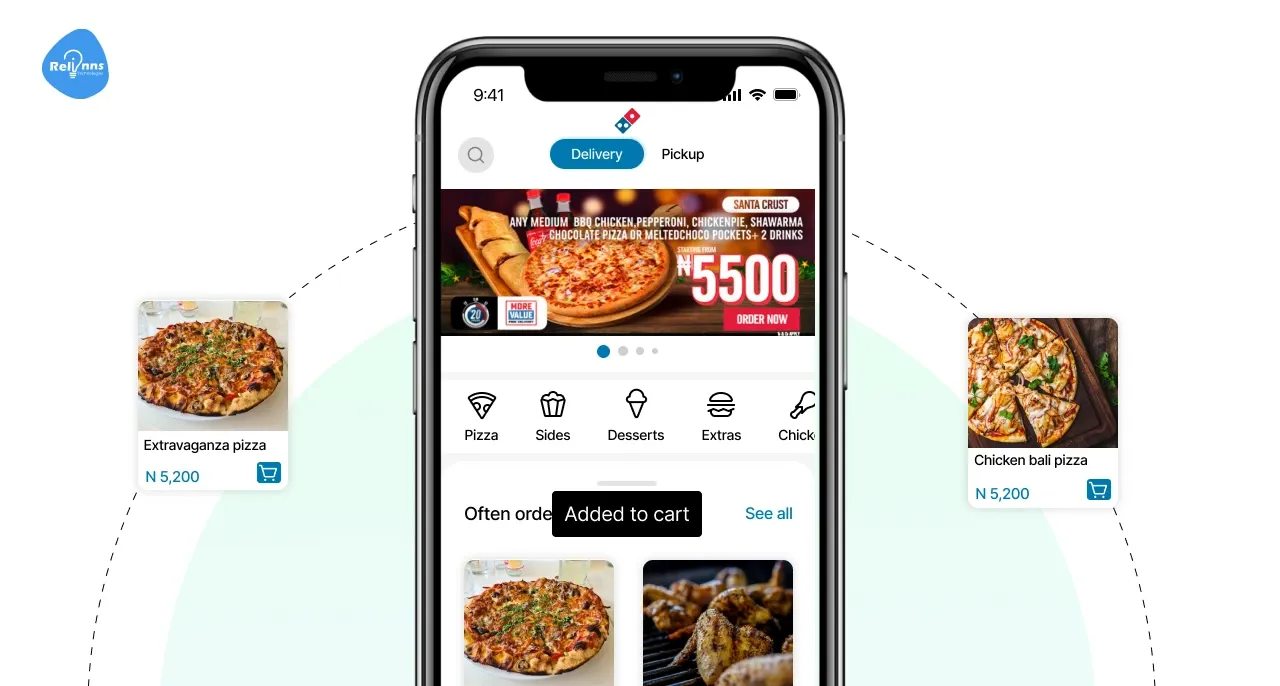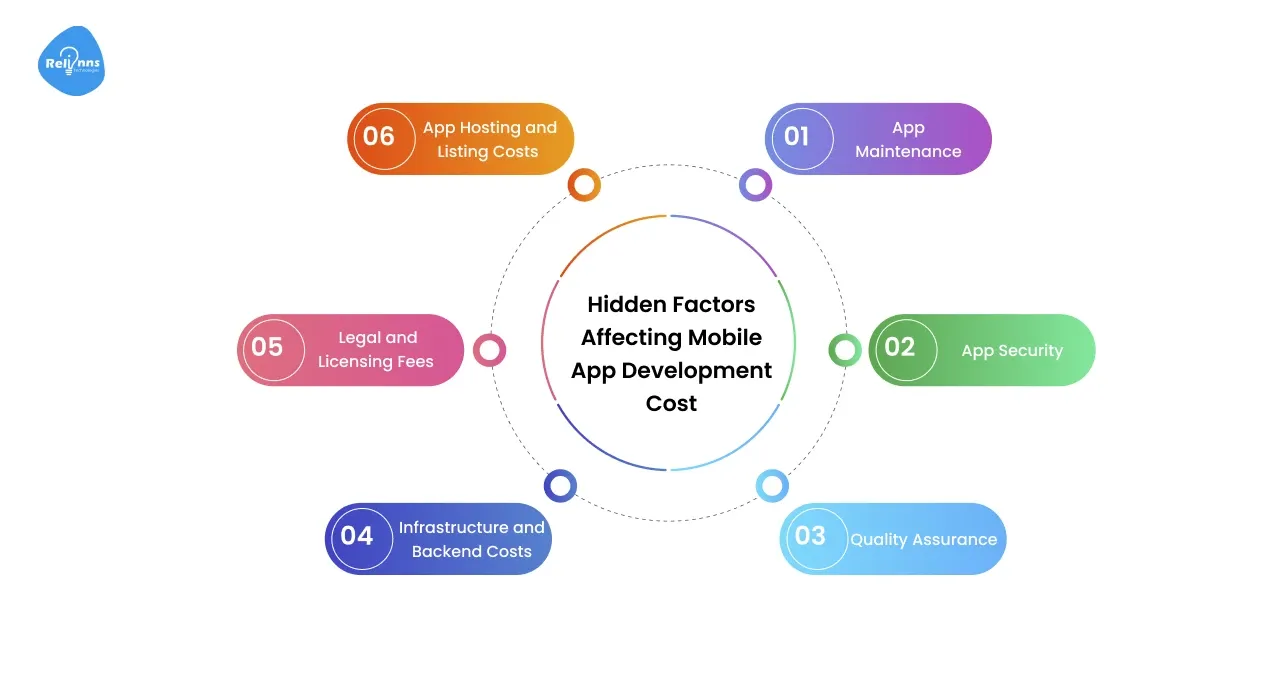How Much Does App Development Cost In 2026
Date
Nov 07, 25
Reading Time
13 Minutes
Category
Custom development

In today’s digital market, businesses often ask, “How much does it cost to develop an application in 2026?” Mobile apps represent a vast, lucrative market – global revenues top $500B and are projected to exceed $780B by 2029.
The answer varies widely depending on an app’s complexity, platform, and development team. On average, simple mobile apps cost tens of thousands of dollars, while fully-featured enterprise platforms can run into the mid-six figures.
Understanding the breakdown of App Development Cost is critical for setting an accurate budget and ROI.
This comprehensive guide will examine the latest mobile app development cost trends by region (USA vs. India vs. Europe), walk through each stage of the development process, and highlight key and hidden factors that drive total costs.
We’ll show you how to estimate costs, control budgets, and maximize ROI for your App Development.
Overview of Average Mobile App Development Pricing
App development pricing varies significantly depending on geography, team size, and project complexity. In 2026, businesses should expect the following.
- United States: Developer rates typically range from $100 to $150 per hour. A moderate U.S.-based project can cost between $80,000 and $150,000. For complex apps, costs can soar past $200,000.
- India & South Asia: Rates average $20–$80 per hour. A similar mid-range app may cost $30,000–$60,000, while simpler apps can be achieved under $50K.
- Eastern Europe (Ukraine, Poland, etc.): Developer rates range from $25–$120 per hour, offering a middle ground between affordability and expertise.
To illustrate further, industry-wide benchmarks are estimated.
- Discovery/Planning Phase: Around $1,200–$11,000, covering market research and initial scope documents.
- UI/UX Design: Typically $2,500–$10,000, depending on complexity.
- Development: Ranges from $3,000–$60,000+, representing the bulk of the cost.
- Testing & QA: Often capped at around $5,000–$10,000 for mid-sized applications.
In practice, the cost of mobile app development for a standard mid-range project ranges from $75,000 to $100,000, depending on features, platforms, and quality assurance.
For context: A simple app built in India for $60K might cost $150K+ in the U.S. for a comparable scope.
Additionally, senior developer salaries reflect this regional variance: about $10,000/year in India versus $75,000/year in the U.S., translating to a 3–4x difference in hourly billing rates. These disparities drive a significant portion of your overall App Development Cost.
How to Estimate the Cost to Develop a Mobile App?

Estimating app cost starts with defining your project scope and breaking it into features. Calculate total development hours and multiply by your team’s hourly rate. Then add design and QA.
- Feature List: Outline all core and optional features.
- Hours × Rate: Use Development Hours × Hourly Rate to get the base cost
- Add Overhead: Include design, QA, and maintenance. Allocate about 15–20% extra of the dev cost for post-launch updates
For instance, allocating ~15% of hours to design and 20% to QA can refine your estimate.
As a rough rule, 2,000 hours × $50/hr = $100K, plus ~$20K for design and testing, totals about $120K for a typical app. Lastly, consulting with experts can refine these numbers.
Many firms (including Relinns) offer free initial consultations and quotes. Tools like ROI calculators or no-code platform calculators can also help approximate costs before committing.
Use industry benchmarks and factor in every phase (design, dev, QA, launch) to arrive at a realistic App Development Cost.
How Much Does It Cost to Build an App in 2026? Complete Process

Estimating App Development Cost means understanding every phase of the build, from research to release.
Each stage affects your final mobile app development cost, especially as you add features and platforms.
In 2026, tools, team location, and tech stack all shape the cost to develop an app. Here’s a breakdown of the complete process with real-world figures and key optimization insights.
1. Planning & Discovery
Market analysis and clear goals set the stage. Conducting thorough market research and requirements gathering ensures you build the right app.
A well-defined project roadmap helps prevent scope creep and budget overruns. Skipping this step often doubles the App Development Cost later.
Documenting precise requirements and use cases upfront pays dividends down the line.
- Discovery typically consumes 10–15% of the total budget, roughly $1.2–$11K for small apps.
- Expect 20–80 hours of effort to create a detailed spec and requirements document.
- Poor planning leads to failure: About 95% of apps never gain significant traction without a solid upfront strategy.
2. UI/UX Design
Design brings your app to life. High-quality UI/UX design is critical for user adoption.
Intuitive interfaces and polished visuals keep users engaged. Investing early in design can cut coding rework later.
Prototyping tools (like Figma or Sketch) let you test designs cheaply before coding begins.
- UI/UX often accounts for about 10–15% of dev costs, roughly $2.5–$10K.
- Complex visual design can require 150–300+ hours ($5K–$15K) of designer time..
- UX matters: 52% of users say poor aesthetics/design is why they won’t return. Remarkably, each $1 invested in UX can return about $100 in business value.
3. App Development (Coding)
Writing the code is the most significant chunk of work. This phase builds out all features on the chosen platforms.
Complex features or custom backends can significantly raise the App Development Cost. Using cross-platform frameworks (like React Native) can save time and money.
Remember that more experienced developers often cost more per hour, so a smaller, more skilled team can be more cost-effective.
- Development budgets vary widely: Appinventiv cites $5K–$200K for this phase, depending on complexity.
- Cross-platform tools can reduce workload by 20–40%, lowering your cost.
- Outsourcing and location impact cost: hiring developers in lower-cost regions can yield 30–60% lower rates, cutting your App Development Cost nearly in half.
4. Testing & Quality Assurance
Rigorous QA keeps the app stable. Comprehensive testing (functional, performance, security) is essential.
Early bug-fixing saves money – catching issues during development is far cheaper than post-launch fixes. Allocating budget to QA prevents unhappy users. Including automated test scripts early (unit and integration tests) can catch 70–80% of bugs before release.
- QA often takes 15–25% of the development budget.
- Engaging QA early reduces fixes: catching bugs upfront can reduce later rework costs by 5×.
- Cost of defects: Fixing bugs in production can be up to 100× more expensive than fixing them during development (per IBM), underscoring the value of early QA.
5. Deployment & Launch
Going live and marketing the app. Submit the app to stores and prepare for launch.
App store fees and initial marketing should be budgeted up front, and plan for compliance (store guidelines, security reviews) to avoid surprise rejections.
Keep extra time for possible app store review issues or unexpected changes.
- App store fees: Google Play charges a $25 one-time registration fee
- Apple’s App Store charges an annual fee of $99 for individuals and $299 for enterprises.
- Plan for marketing: many businesses spend 50–100% of dev cost on user acquisition
- Overlooking launch requirements can add unexpected expenses. Properly preparing materials (screenshots, certifications) prevents costly delays in approval.
6. Maintenance & Updates
Maintenance is an ongoing cost that can’t be ignored. After launch, you need to fix bugs, update for new OS versions, and add features over time.
Plan for updates by allocating part of your budget. Neglecting maintenance can lead to emergency fixes and higher costs later.
Ongoing support should be factored into the plan from day one.
- Industry rule-of-thumb: annual maintenance costs are 15–20% of the original budget
- Infrastructure costs: as user count grows, cloud servers and databases may cost $30–$150+ per month each
- Scaling: For large user bases, running costs (servers, APIs, analytics) can total $500–$2000+/month. Treat maintenance as a yearly line item, and consider maintenance contractors or retainer support budgets.
Use Case: Domino’s Pizza App Redesign for Higher Conversions

Problem: Domino’s Pizza was experiencing steadily declining checkout completion rates on its mobile app. With growing competition in the food‑delivery market, improving the user journey became essential to maintaining market share and controlling mobile app development costs.
Solution: The company invested in a complete UI/UX refresh, focusing on a streamlined ordering flow across both iOS and Android. The redesign reduced the number of screens, improved navigation clarity, and introduced faster load times, all contributing to lowering long‑term app development cost breakdown by increasing efficiency.
Results
- Achieved a 23% increase in checkout conversion rate within three months post‑launch.
- Reduced cart abandonment by 18%, especially in mobile sessions during peak hours.
- Increased app‑driven revenue by 12% by improving upsell visibility and order flow.
- Improved average order value (AOV) by 9% as the streamlined flow encouraged add‑ons.
Read More Here: Domino’s Pizza App Redesign Case Study
Use Case: Financial Loan Origination App with Relinns & Joget
Problem: A mid‑sized financial institution spent approximately $18,000 and six months working with freelance developers, but failed to complete a loan origination app. The project lacked compliance workflows and an efficient UI, driving up app development costs and delaying time‑to‑market.
Solution: The firm partnered with Relinns, specialists in low‑code development using the Joget platform. In just 10 weeks, they delivered a fully functional web and mobile loan origination app, including KYC automation, lead tracking, underwriting logic, and a user‑friendly interface, thereby significantly reducing overall app development costs.
Results
- Reduced total app development cost by ~40% compared with their initial freelance approach.
- Shortened time‑to‑market by ~60%, from six months to ten weeks.
- Cut manual loan processing workload by ~70% through workflow automation and real‑time notifications.
- Improved user adoption rate by 32% within the first month of launch.
Read More Here: Relinns Loan Origination App Case Study
What are the key factors that affect app development costs?
Understanding what drives app development costs in 2026 is critical for businesses planning digital products.
Whether you're building a simple app or a full-scale enterprise platform, confident choices can significantly influence your overall budget.
These are the six core factors that impact pricing in modern mobile app development projects.
1. App Features and Functionalities
Every feature you add increases both development time and cost.
Core functionalities like login, notifications, or media uploads may seem simple, but they involve multiple layers of design, coding, backend logic, and testing.
The more dynamic your feature set, the higher the cost of mobile app development.
- User authentication systems need a secure architecture and session management.
- Push notifications require backend event triggers and device token management.
- Media uploads or gallery features demand storage handling and compression logic.
- Real-time chat, maps, or booking systems require third-party APIs or custom logic.
2. Technology Stack (Languages, Frameworks, Databases)
The technology stack for mobile app development comprises the programming languages, frameworks, and database systems used for both the frontend and backend.
These choices directly affect cost by influencing development speed, talent availability, maintenance, and scalability.
- Native stacks (Swift, Kotlin) offer speed but increase platform-specific costs
- Cross-platform tools (React Native, Flutter) reduce cost by reusing code
- Backend tech (Node.js, Django, Laravel) varies in complexity and resource demand
- Database choices (Firebase, MongoDB, MySQL) impact speed, scaling, and security
3. Trends and Emerging Technologies
Modern apps often offer innovative experiences using cutting-edge technologies.
While these trends improve UX and competitiveness, they also raise the average cost of app development due to additional research, hardware testing, and specialist hiring.
- AI features like voice bots or recommendation engines need model training and testing
- Blockchain for digital wallets or contracts requires advanced architecture and audit
- Augmented Reality (AR) needs 3D assets, camera access, and gesture mapping
- IoT-based control apps require secure device sync and latency optimization
4. Mobile App Complexity
Mobile app complexity plays a decisive role in determining how much time, talent, and infrastructure your project will require.
From simple apps with limited screens to large-scale solutions with offline support and multi-role permissions, the complexity dictates the level of detail and cost.
- Basic apps with static content and minimal input can be built quickly
- Mid-level apps include user roles, content feeds, and API calls
- Advanced apps feature real-time sync, dashboards, and admin portals
- Offline capability adds complexity due to caching and data sync layers
5. App Category and Industry Type
The industry your app belongs to strongly affects development time and compliance requirements.
A game, a healthcare tool, and an educational app may seem similar in scope, but the workflows, legal validations, and backend architecture vary significantly.
That means cost does too.
- Healthcare apps need HIPAA compliance and encrypted medical data storage
- Finance apps demand KYC, encryption, and fraud detection logic
- E-learning apps involve content management, quizzes, and live streaming
- Marketplace and retail apps need inventory, cart, and payment gateway logic
6. Third-Party Integrations
Many apps rely on third-party services for speed, convenience, and cost savings.
However, each integration requires research, implementation, configuration, and testing.
Over time, maintaining these services may also incur additional costs, depending on their pricing models.
- Payment gateways (Razorpay, Stripe) charge usage fees and need secure callbacks
- Maps and location APIs add both functionality and pricing based on usage
- SMS, email, or OTP systems need reliable third-party messaging services
- External databases, CRMs, or analytics platforms increase testing cycles
Hidden Factors Affecting Mobile App Development Cost

While most businesses focus on features and design when estimating budgets, there are hidden factors that silently increase app development costs over time.
These operational and support-related expenses often emerge post-launch, making them crucial for long-term sustainability planning.
1. App Maintenance
App maintenance is a recurring cost that starts right after launch.
Without timely updates, your app can suffer from crashes, compatibility issues, and poor user reviews.
Businesses must allocate 15%–25% of the original budget for ongoing mobile app maintenance.
- OS updates (Android/iOS) require compatibility testing and patch rollouts
- Bug fixes based on user reports and crash analytics are ongoing costs
- Regular performance optimization ensures loading speed and battery efficiency
- Minor UI/UX improvements or new feature tweaks often require developer time
2. App Security
Security is not just a feature; it is a compliance and liability shield.
Especially in fintech, healthcare, or e-commerce apps, failing to implement strong security measures can lead to data breaches, lawsuits, and long-term losses.
- End-to-end encryption must be implemented for data at rest and in transit
- Role-based access and token authentication systems reduce unauthorized access
- Code obfuscation and anti-reverse engineering prevent app cloning or theft
- Regular penetration testing and audits increase enterprise-grade app security
3. Quality Assurance (QA) and Testing
Quality assurance (QA) is often underestimated in cost planning.
However, mobile apps must work seamlessly across multiple devices, screen sizes, and OS versions.
The time and tools needed for extensive testing can become a significant hidden cost.
- Manual testing is required for real-world scenarios and gestures
- Automated testing (e.g., with Appium) increases upfront cost but saves time
- Device lab testing (cloud-based or physical) ensures cross-platform compatibility
- Load testing and UX feedback loops ensure stability under traffic spikes
4. Infrastructure and Backend Costs
Even the simplest apps need robust backend infrastructure to manage users, transactions, and data.
These costs scale with usage and are critical to ensure uptime, security, and real-time functionality.
- Cloud services (AWS, Azure, Firebase) charge for storage, API calls, and bandwidth
- Real-time data (chats, orders) requires websockets and queuing services
- Databases need performance tuning, auto-scaling, and security layers
- CDN (Content Delivery Network) services ensure global speed, but add a monthly cost
5. Legal and Licensing Fees
Depending on the app category and geography, you may need licenses, certificates, or rights to third-party content.
These are often overlooked during early cost estimation but can block launches if missed.
- GDPR or HIPAA compliance requires legal consultation and documentation
- API usage rights (like payment or map services) may require commercial licensing
- Copyright clearance for third-party content (videos, music) avoids legal trouble
- Industry-specific certifications (like health or fintech) increase both time and cost
6. App Hosting and Listing Costs
Simply putting an app on the store is not free.
There are hosting, listing, and platform fees associated with mobile app deployment, especially at scale.
These may be one-time or subscription-based, depending on the service used.
- Google Play charges a one-time listing fee; the Apple App Store charges an annual fee.
- Hosting a backend server or database adds to the cloud infrastructure cost
- CI/CD tools like Bitrise or Jenkins may require subscription tiers
- App store optimization (ASO) and ad spend impact visibility and downloads.
How Can You Optimize Your Mobile App Development Costs?
By following proven strategies, businesses can significantly lower their App Development Cost without sacrificing quality.
- Build an MVP & Prioritize: Focus on essential features first. This can cut early costs by 20–50%, lowering your initial spend. Leave nice-to-haves for later.
- Engage QA Early: Testing in parallel with development catches bugs sooner. This can reduce later bug-fixing expenses by 5×, keeping overall App Development Cost down.
- Firebase or OSS-Platform Tools: Sharing code across iOS/Android saves effort. This can reduce total development hours by 20–40%, significantly lowering costs.
- Outsource Strategically, cost-effective teams. Outsourcing to Asia or Eastern Europe yields 30–60% lower rates, slashing your App Development Cost.
- Leverage Reusable Components: Use pre-built libraries, templates, and frameworks. This avoids reinventing the wheel, accelerates dev, and cuts coding time, reducing App Development Cost.
- Automate & Iterate: Employ CI/CD pipelines and automated tests to reduce manual work. Automation shrinks development effort and cost. Iterate after launch to improve based on feedback.
- Continuous Improvement: Launch a minimal feature set, gather user feedback, then iterate. This phased approach spreads costs over time and avoids costly rework by not building too much upfront.
- Plan Ahead: A clear roadmap and anticipation of future needs prevent expensive refactoring. A solid plan can prevent scope creep, saving up to 20% of development cost.
How Can Relinns Help You With App Development Estimation?
Relinns specializes in low-code Joget platform solutions that drastically reduce development time and cost.
Their certified experts provide custom estimates to avoid budget surprises. For example, Relinns can cost-ten-prototype simple low-code apps for $5K–$10K using Joget, a fraction of traditional custom development costs.
Many customers report 30–50% lower total cost of ownership (TCO) compared to hand-coding. Below are some highlights.
- Rapid Low-Code Development: Complex workflow apps can be built in weeks rather than months, accelerating delivery and cutting your overall App Development Cost.
- Cost Examples: Simple Joget projects often run $5K–$10K, while larger departmental apps cost $20K–$ 40K.
- Proven Savings: Customers frequently report TCO 30–50% lower with Joget than with traditional coding.
- Quick Estimates: Relinns provides custom Joget cost breakdowns within 48 hours, ensuring clear budgets and no surprises.
Read more in our guide here.
Partnering with Relinns means accessing experienced Joget developers and a cost-efficient platform.
With Relinns, you gain predictable pricing and expert guidance, so you know exactly where your budget goes.
Conclusion: What is the Total App Development Cost in 2026?
Estimating App Development Cost in 2026 requires understanding many moving parts. Basic apps might start around $40K–$100K, whereas highly complex solutions can exceed $300K.
Hidden expenses like QA, infrastructure, maintenance (15–20%/yr), and marketing can inflate the final spend. By budgeting for each phase and prioritizing features, you can keep costs in check.
In fact, many businesses find that thoughtful planning and tools (like Relinns’ low-code platform) cut their actual App Development Cost by up to 50%. A well-scoped $150K app that hits its target audience is far more valuable than a cheap $50K app that fails.
After all, controlling the App Development Cost is crucial, but ensuring each dollar drives user satisfaction and business growth is the ultimate goal.
In summary, treat app budgeting as an iterative process: plan, get multiple quotes, build a prototype, and compare actual expenses to estimates.
Regularly reviewing progress with stakeholders helps catch overruns before they grow. By carefully comparing quotes, building prototypes (to validate scope), and planning contingencies, you can approach your target App Development Cost with confidence.
Budget wisely and monitor progress to keep your project on track. As a rule of thumb, a two-person team (at ~$6K/month each) over 6 months spends ~$72K in labor alone, a real-world budget anchor.
Every app and budget is different, so use these guidelines flexibly to fit your needs. Budget wisely, and ensure each feature adds value.
Frequently Asked Questions (FAQ's)
How Do Apps Make Money?
Apps generate revenue through in-app purchases, subscriptions, ads, or premium features. Choosing the right monetization strategy helps offset App Development costs and ensures long-term profitability in mobile app development.
What is the Cost of Hiring an App Developer?
The cost to hire an app developer varies by region and expertise. Hourly rates range from $25 to $150, significantly impacting your overall App Development Cost and delivery timeline.
How much does it cost to develop an app?
The App Development Cost depends on complexity, features, and platform. A basic app may cost $25,000, while high-end apps can exceed $250,000, especially with custom backend and third-party integrations.
Can I create an app for free?
Yes, you can use no-code tools to build simple apps for free. However, commercial apps incur App Development Costs, such as hosting, maintenance, and feature expansion, as they scale.
How much will it cost to run an app?
Ongoing mobile app development cost includes server fees, updates, support, and compliance. Expect to spend 15–20% of the initial App Development Cost yearly for smooth operation and growth.
How much does it cost to make an app for your business?
Creating a business app typically costs $40,000–$120,000, depending on goals and tech stack. A scalable app increases ROI, justifying the initial App Development Cost through automation and user engagement.


